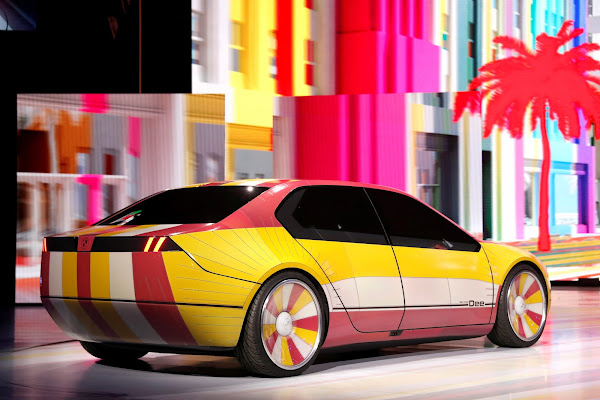For this year’s CES, BMW showed off the i Vision Dee, an electric sports sedan concept that previewed a whole raft of technologies we could see in the immediate future, like AI-powered virtual assistants and full-windshield heads-up displays. But it also included a full-color version of the E Ink technology seen on last year’s concept for the first time ever.
This means that the i Vision Dee — which looks like a kind of cross between a vintage BMW and a Tesla — can change colors on command. Instead of just black, white, and gray, 32 colors are now available. Not only that but the i Vision Dee is made up of 240 E Ink e-paper segments, all of which can be controlled individually. This means the i Vision Dee can shift to one solid color or put on one hell of a light show.
Patrick George
This allows an almost infinite variety of patterns to be generated and varied within seconds, BMW said in a statement.
A cool concept that could cause unfortunate side effects on the roads. A car changing colors while driving could prove distracting to other drivers and people on the road. The effect could be even more perilous at night: electric cars already produce less noise that combustion engines; imagine a silent vehicle adopting a dark color on the streets. With the headlights off it would be nearly impossible to spot for pedestrians. And a full-windshield heads-up display, bombarding the driver with notifications or – gasp! – running ads! seems like an accident waiting to happen too.

I could see this concept expanded to a full-on camouflage, if the car added cameras to record its surroundings and mimicked them in near real-time on its e-ink skin. In fact, I’m a bit surprised there isn’t a comparable military application yet – that I’ve heard of at least. It could conceal military machines and soldiers in the visual spectrum at least, and a distance. The article does mention some of the technology’s current limitations, which prevent it from becoming market-ready relatively soon.
Post a Comment